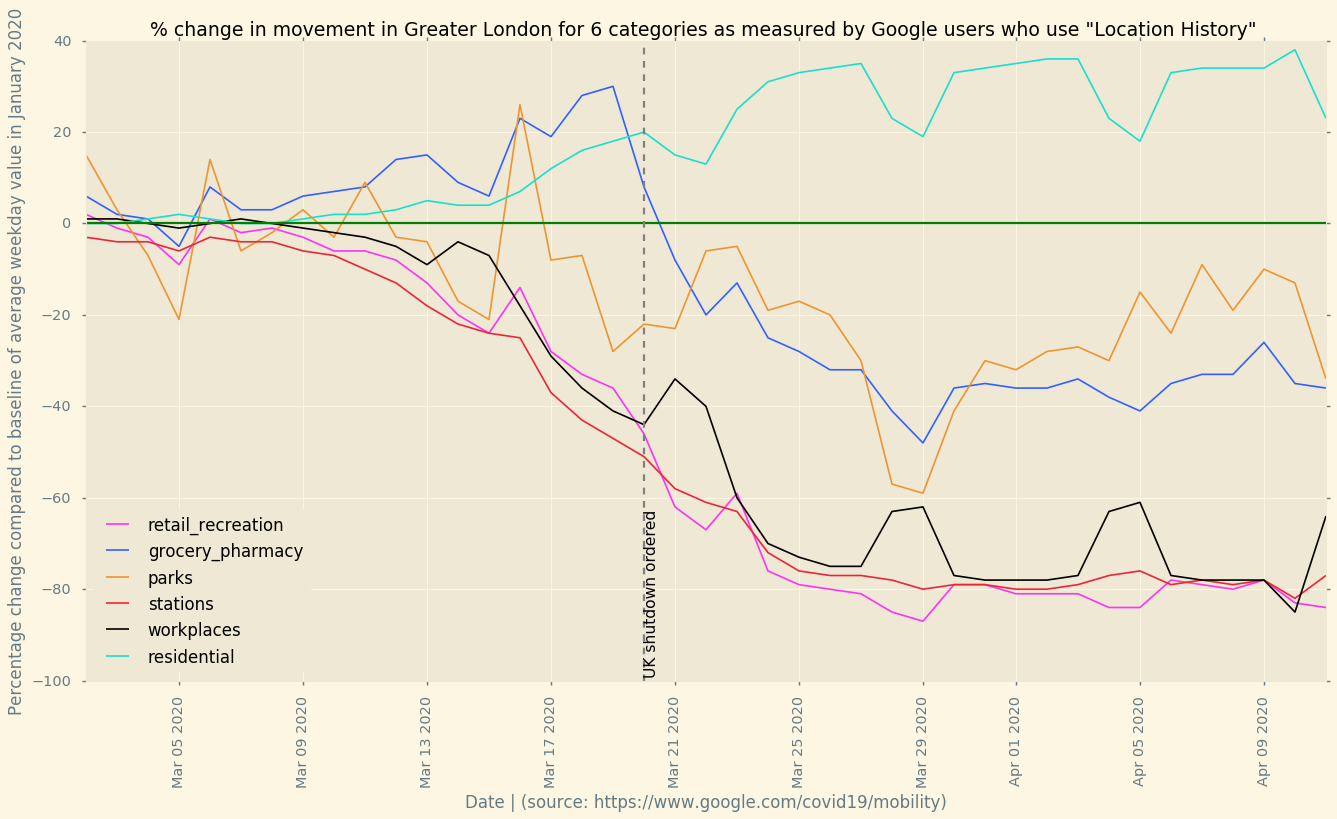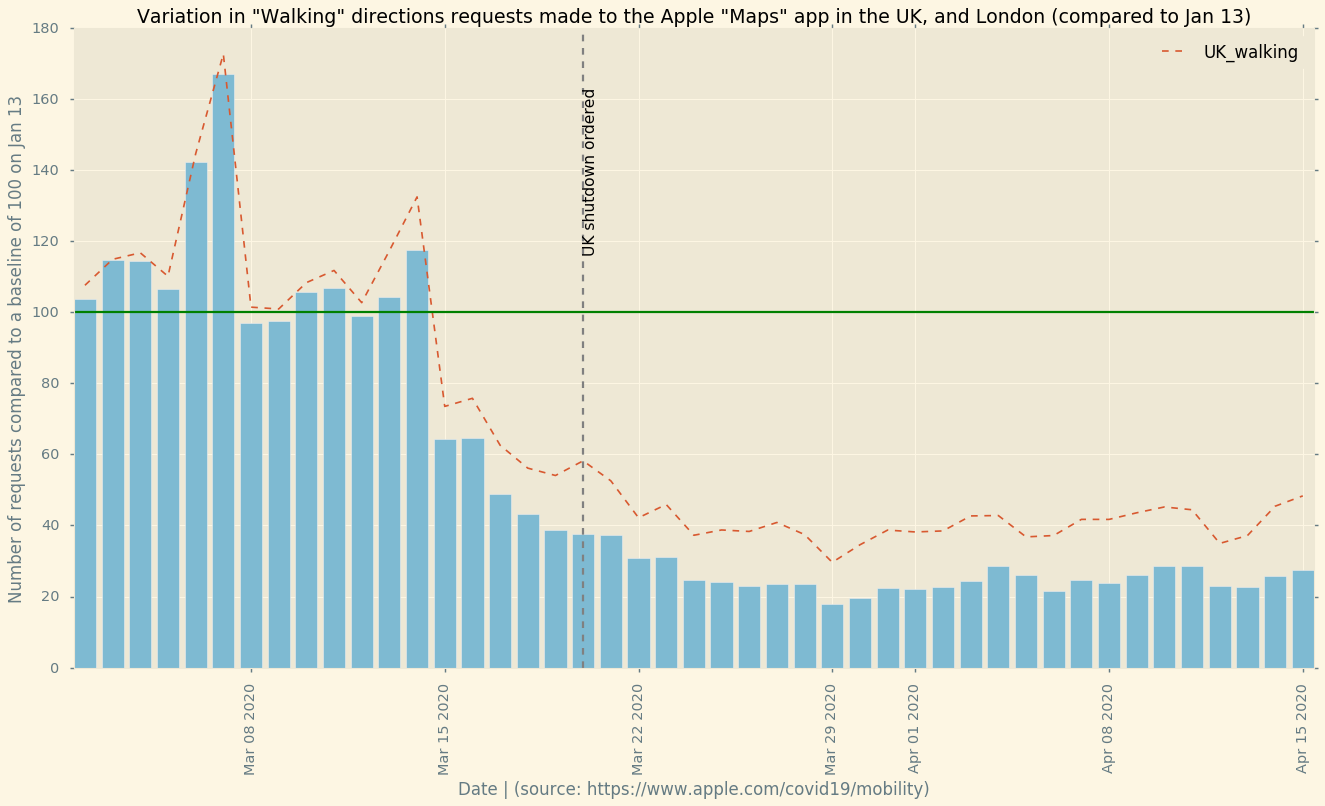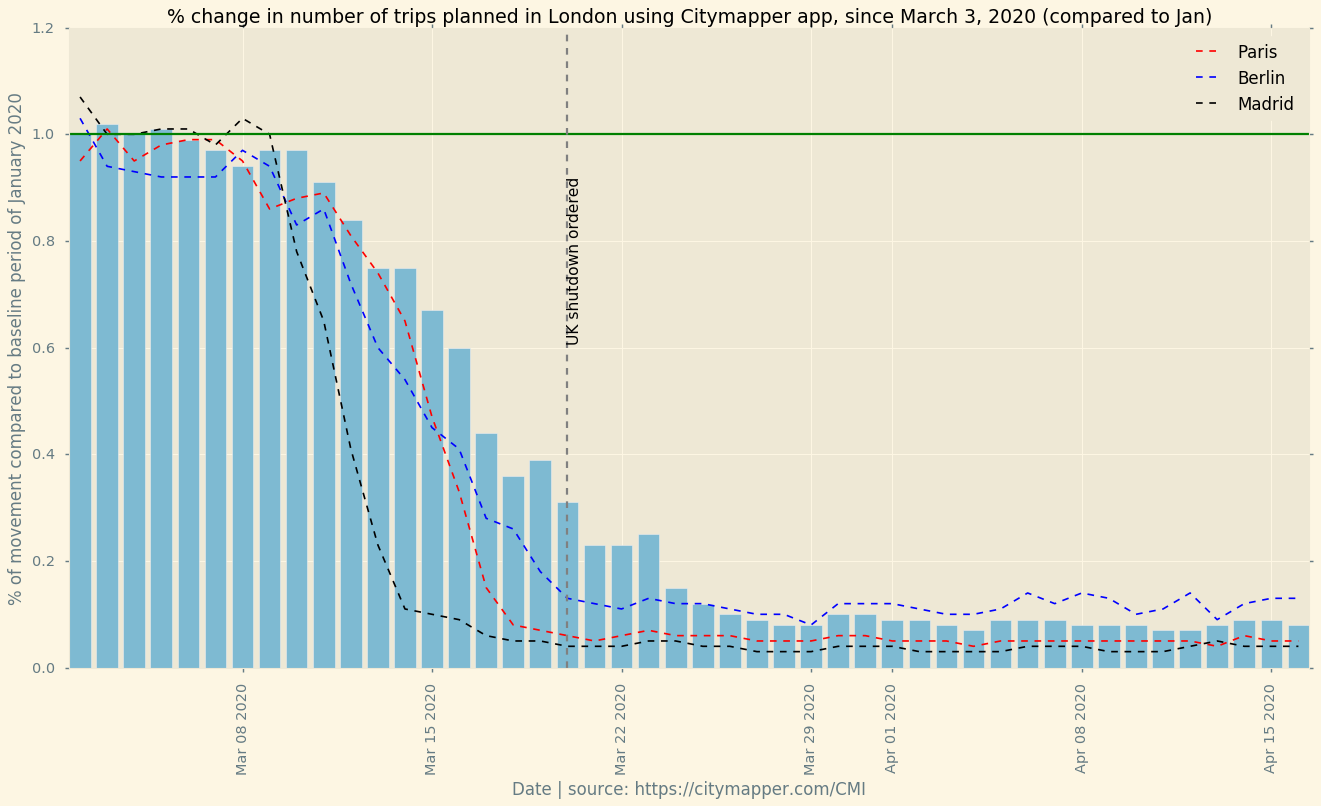What your mobile phone app tells us about the shutdown
Published:
Google, Apple and Citymapper have each released data they collect from users’ mapping or location apps. The data shows that the public started to stay home well before national lockdowns were ordered.
Google’s data shows the change in Londoners’ movement across six categories, and the trends show what you’d expect. Three categories – work, non-essential retail and transport stations – basically collapse, compared to a few months earlier. Two others drop but not completely: parks and essential retail like grocery stores. And, also unsurprisingly, movement classed as ‘residential’ increases.

All these trends began well before the government ordered a national shutdown on March 20th; Londoners began to do all these things from March 9th onwards. A rush on grocery stores is also visible as those numbers climb all the way to the 20th.
This could read as a measure of hesitation by the UK government, especially this weekend when the UK press is full of recriminations over the handling of the Coronavirus pandemic. The Sunday Times headlines 38 days when Britain sleepwalked into disaster and in The Guardian one of the most-read pieces is How did Britain get its Coronvirus response so wrong?.
WARNING. All these tech companies don’t release any absolute figures with their data. They insist that there the numbers of people using these apps is sufficient to draw meaningful conclusions but we are dealing essentially with a sample of people and even then it’s a sample of people who’ve been selected on the basis that they authorise Google’s ‘Location History’ or use Apple’s ‘Maps’ app on their phone.
The data from Apple shows the same trend, that people in the UK stopped walking - or at least stopped using the ‘Walking’ feature in their mapping app - well before the shutdown. The drop in movement is exaggerated in London with the numbers sinking almost to 20% of what they were, while the rest of the UK hovers around 40% of what it was.

This tendency of movement slowing before an official shutdown is not unique to London however.
Citymapper data shows that in Berlin or Paris, the data shows a dropoff well before governments ordered people to stay home. However the length of time between movement slowing and the ordering of a shutdown is probably longer in the UK, at more than ten days.

The github repository with the data files and python notebook is here.
